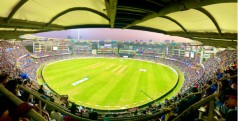



















Wednesday, Aug 17, 2022 10:00 [IST]
Last Update: Wednesday, Aug 17, 2022 04:32 [IST]
PART-II
Major Durga Malla – Uttarakhand
Born on 1st of July in 1913 at the Doiwala village in Dehradun district of Uttarakhand, Durga Malla joined the Gorkha Rifles in 1931 at the age of 18. In 1942, at the height of the 2nd World War, a group of Indian soldiers led by Durga Malla decided to breakaway and form the Indian National Army under Netaji Subash Chandra Bose. Durga Malla was one of the key figures responsible for the formation of the INA, as he was largely responsible for encouraging fellow Gorkha soldiers to quit the British and join the INA. Seeing his dedication towards the Freedom of India and his military talents, he was promoted to the rank of Major by Netaji, and posted in the intelligence branch of INA, where he performed exemplarily often taking risky missions that helped INA march forward.
It was during one such intelligence gathering missions that he was arrested on the 27th of March, 1944 near Urkhul in Manipur. He along with fellow INA prisoners were kept in a prison at the Red Fort as a prisoner of War. There, the British tried to persuade him to renounce INA and offered him that his life would be saved if he did so. But he flat out refused to bow before the British. When all tricks and coercions failed, the British brought his wife Smt. Sharda Devi to get him to denounce INA, but instead he told his wife, “Sharda, I am sacrificing my life for the freedom of my motherland. You need not be worried and distressed. Crores of Hindustanis will be with you after my death. The Sacrifice I am offering, shall not go in vain. India shall be free. I am confident, this is only a matter of time.”
On 25th August 1944, he was sent to the gallows.
Today, his statue adorns the premise of our Parliament, marking the contribution of Gorkha community towards our Independence.
Subedar Niranjan Singh Chhetri - Manipur
Among the illustrious Gorkha community that has produced so many heroes for our nation, the honour of being the 1st Gorkhali to have martyred for our motherland goes to Subedar Niranjan Singh Chhetri ji, from Manipur.
When the great Manipuri hero Jubraj Tikendrajit Singh decided to resist the British incursions into Manipur, 39-year-old Niranjan Chhetri of Tikuamoh, who was an ex-army sipahi of the 34th native Infantry, joined the native force of Manipur led by Bir Tikendrajit and Thangal General. His past experience as a soldier and bravery was evident, and he was appointed as Subedar by Jubraj Tikendrajit himself.
Following the war, he was tried by the Chief Political Officer, Manipur Field Force and was hanged to death by the British on June 8th, 1891. His last words were, “My birthplace is my Motherland, I am ready to die for this land, and I am ready to kill for this land, but I am not ready to accept surrender and subjugation of my own land”.
For decades, his sacrifice had been relegated to the pages of history. However, under Hon’ble Chief Minister N Biren Singh ji the history and legacy of this legendary Gorkha Freedom Fighter is finally being brough to light. On March 7th, 2021, CM N Biren Singh ji unveiled the statue of Saheed Subedar Nirajan Singh Chhetri, he acknowledged the role played by Subedar Niranjan by writing, “Immensely glad to unveil the statue of Saheed Subedar Niranjan Singh Chhetri, one of the heroes of Ango-Ma
nipur War, 1891. His bravery, patriotism & sacrificial spirit for the motherland were unparalleled. He was hanged to death by the British on June 8,1891 for his role in the war.”
Dalbir Singh Lohar – Assam
Dalbir Singh Lohar from Assam joined the freedom movement in 1921 during Gandhi ji’s visit to Dibrugarh. He was a labour leader and one of the most prominent Freedom Fighters from Assam, who led the Civil Disobedience Movement in Dibrugarh from the front. He was imprisoned between 1930-31 for his participation in the Civil Disobedience Movement, along with other Gorkha freedom fighters from Assam like Bhakta Bahadur Pradhan, Anantalal Sharma.
In 1939, Assam saw the historic strike at the Asia’s oldest refinery and the birthplace of oil industry in India in Digboi, Assam. Dalbir Singh Lohar was one of the key leaders of the strike called by the non-unionised Digboi Oil Refinery workers. Citing tensions with Germany, the British crushed the Digboi strike with an iron hand sending down eight platoons of Asssam Rifles to crush it. All the prominent leaders like Dalbir Singh Lohar were issued Quit Digboi, Quit Lakhimpur, and finally Quit Assam within 72-hours’ notice by the British.
He was again arrested during the Quit India Movement called by Gandhi ji, and all the Gorkha freedom fighters like Bhakta Bahadur Pradhan, Anantalal Sharma and others and kept in separate jails. However, they soon became the symbols of working-class people’s resistance against the British government.
After Independence, Dalbir Singh Lohar went onto become the first MLA of Gorkha ethnicity to be elected from the Digboi Assembly, by winning the 1951 election with a landslide margin. He continued to serve the working-class people all through his life.
These are only a few, whose contributions I have highlighted today, there are hundreds of others who have played a significant role towards ensuring our Independence, but due to the paucity of space, accommodating them all is not possible.
As can be seen, the Gorkhas no matter which state they were born in, have played a significant role in our Freedom Struggles, and I am hopeful that as we celebrate the “Azadi ka Amrit Mahotsav” more people across the nation will come to know about heroes like them.
Jai Hind
(CONCLUDED)
(Raju Bista is the Member of Parliament from Darjeeling and National Spokesperson for BJP)
